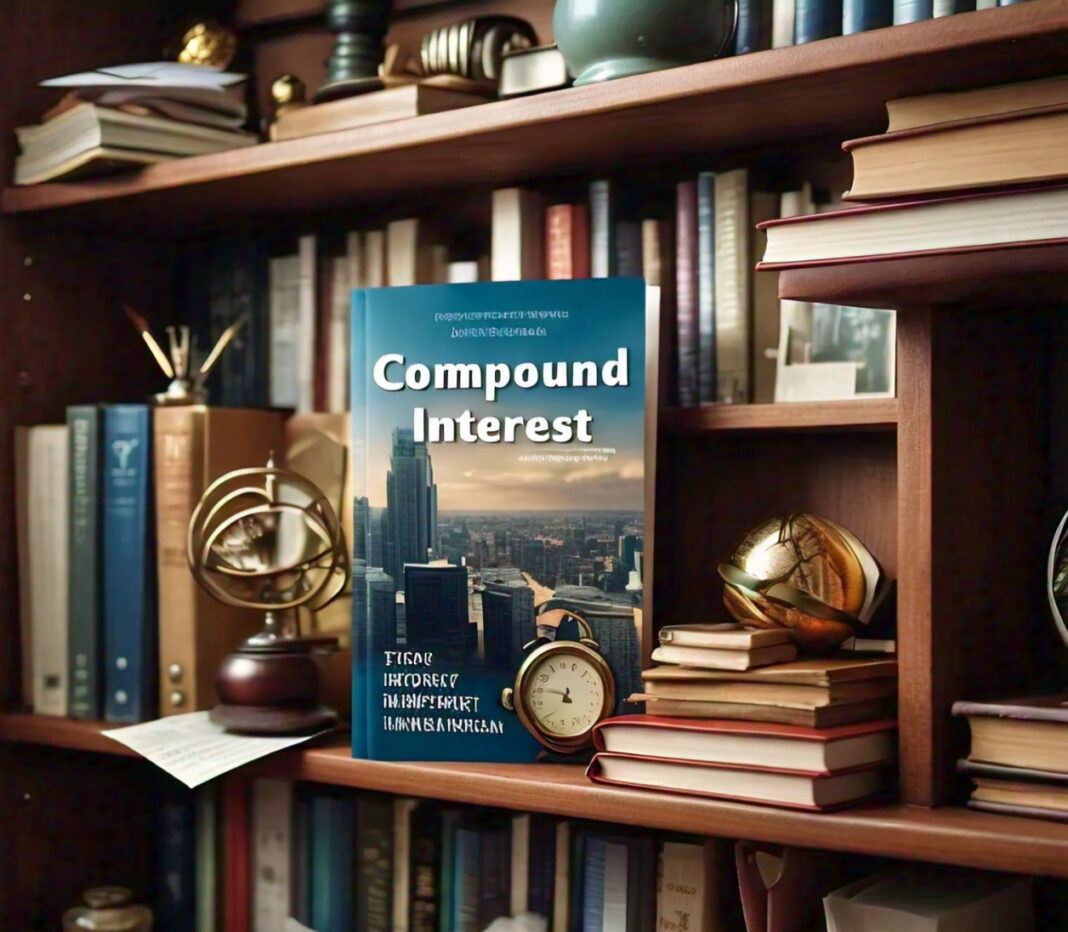Compound interest is often referred to as one of the most powerful concepts in finance. It’s about growing wealth over time, allowing investments and savings to grow exponentially in size. Whether looking to save for retirement, invest in stocks, or build a nest egg, understanding how compound interest works is paramount in maximizing your financial potential.

In this article, we shall cover compound interest, the difference it holds from simple interest, and how it can work for and not against you, should one manage it correctly. We will also look at practical examples, and some strategies to squeeze everything out of this financial tool.
1. **What is Compound Interest?
At the basic level, compound interest is interest on both the original principal and the interest that has already accrued. In contrast to simple interest, where only the principal accrues the interest, compound interest increases both in the original sum and the accrued interest.
Compound Interest Formula
Mathematically, compound interest is calculated with the formula:
\[ A = P \left(1 + \frac{r}{n}\right)^{nt} \]
Where:
- A = the amount of money accumulated after n years, including interest.
- P = principal amount (initial investment).
- r = annual interest rate (decimal).
- n = number of times the interest is compounded per year.
- t = time the money is invested for in years.
This formula is a relation that brings out how even meager sums of money can grow significantly over time, depending on how frequently the interest is compounded and the rate at which it’s growing.
Difference Between Compound and Simple Interest
Whereas compound interest builds on itself, simple interest is only increased based on the principal amount. For example, in simple interest, when one invests $1,000 with an interest rate of 5% over a five-year period, one would mean that one will receive $50 every year. You would garner a total interest of $250 in that period. In compound interest, however, the interest earned in each subsequent year is added to the principal, leading to exponential growth in the total amount.
- How Does Compound Interest Work?
The magic of compound interest is best put into words as “earning interest on your interest.” The more often your money is compounded, the quicker your investment balance will increase. Compounding can occur on a number of different time frames: daily, monthly, quarterly, or annually; and this greatly affects the outcome.
Frequency of Compounding
- Annually: Interest for a whole year is credited to the principal once per year.
- Quarterly: It compounds four times a year.
- Monthly: It adds interest to the principal 12 times a year.
- Daily: It compounds 365 times a year.
The more frequent the compounding, the more interest will be earned. For example, a $1,000 investment earning an annually compounded 5% rate of interest will be less after five years than the same amount compounded monthly.
Example of Compound Interest
Now, let’s look at an example: a $1,000 investment earning an annual interest rate of 5% compounded annually. After five years, the growth would appear as depicted below.
Year 1: $1,000 × (1 + 0.05) = $1,050
Year 2: $1,050 × (1 + 0.05) = $1,102.50
Year 3: $1,102.50 × (1 + 0.05) = $1,157.63
Year 4: $1,157.63 × (1 + 0.05) = $1,215.51
- Year 5: $1,215.51 × (1 + 0.05) = $1,276.28
After five years, you’d have $1,276.28, which would mean you made $276.28 in interest thanks to the wonder of compounding.
3. Time – The Magic behind Compound Interest
Time is one of the most critical determinants in making compound interest work for your benefit. The longer you let your money sit and compound, the larger the growth will be. Time is that ingredient which even can help small investments grow into substantial sums, and that is probably the reason one is always encouraged to start early in his quest to build wealth.
Starting Early vs. Starting Late
Let’s go ahead and consider two investors to drive this home:
- Investor A starts investing $1,000 a year at age 25 and continues investing till age 35 for 10 years.
- Investor B starts investing at age 35 and continues the investment until he is 65 years old .
Assuming the earnings for both investments are 7% compounded annually, the result becomes: - Investor A, although investing only for 10 years, would have more money at age 65 because his money had the longest time to grow with compounding.
- Investor B would have invested for a longer period but started much later; his total amount is lesser than that of Investor A.
The power of compound interest just shows that the more time the money has to grow, even with a small contribution, the better it is. All it proves is that the earlier the start, the greater the result.
4. How to Maximize the Benefits of Compound Interest
For one to maximize benefits accruing from compound interest, there is a need to apply the right strategies. These are some of the major ways through which one can be able to maximize its benefits:
1. Start Early in Investment
As earlier mentioned, the biggest ally in relation to compound interest is time. The earlier that one starts, the more he or she stands to benefit from compounding. Even in starting off with small contributions, what is important is observing consistency over a long period of time.
2. Invest in High-Interest Accounts
Look out for opportunities of earning higher interest rates; open those accounts which promise to give such interests, including specific savings accounts, CDs, or investment avenues such as stocks and bonds. The higher the interest, the more your money grows over time.
3. Increase Your Contributions Over Time
As your income grows, try increasing the amount contributed to your savings or investment accounts. Being able to continuously ramp up your contribution amount enables you to take full advantage of compound interest and helps in reaping better returns.
4. Choose Investments with Frequent Compounding
Select accounts that offer daily, monthly, or quarterly compounding instead of annual compounding. The more frequently your interest compounds, the faster your investment will grow.
- The Rule of 72 […]
The “Rule of 72” is a rough measure based on the premise of finding out approximately how many years it will take for an investment to double at a constant annual interest rate. You divide 72 by the annual interest rate to get the approximate number of years it will take for your investment to double.
Example of the Rule of 72
Using the Rule of 72, if you know that the annual interest rate is 6%, for instance, you can make a rough estimate that it would take about 12 years to double an investment: 72 ÷ 6 = 12. This rule is a quick way to easily see how compound interest can work in your favor over time.
6. The Risks of Compound Interest
That said, while compound interest is an excellent tool to build up your fortune, it can surely work against you sometimes, especially in the context of debt.
Credit Card Debt
Most credit card companies charge compound interest on the outstanding balance. If you don’t pay off the balance each month, compounding interest kicks in and your debt grows at an alarming rate. That’s why it is very important to try to pay high-interest debt as soon as possible.
Loans and Mortgages
Many loans and mortgages similarly apply compound interest. Although this may be useful in certain investments, this can quickly spiral the cost of borrowing upwards. Be fully conscious of how much interest you pay and whether it compounds, particularly with long-term loans.
7. Practical Examples of Compound Interest
Here are a few real examples where compound interest plays an important role in building wealth:
Savings Accounts
Most high-yield savings accounts compound interest. By continually putting money in your savings and letting the interest compound, your money will grow faster than it would in a traditional savings account.
Retirement Accounts
As for retirement accounts like 401(k)s and IRAs, this is where compound interest can be one of the best things to have going for you. Over several decades, this is where the magic of compounding really helps your retirement fund grow.
Investment Portfolios
Stocks, bonds, and mutual funds also benefit from compound interest, especially when one is reinvesting dividends and interest. It applies quite well to investing: the longer you leave your money to work for you, the more time compound interest has to grow your wealth.
Conclusion
Compound interest arguably holds the most importance of all financial tools needed to breed your wealth. This could be better achieved by realizing how it works and applying some strategies which include starting early, making regular contributions, and choosing the right investment vehicles.
Remember, time is the biggest weapon that you have with compounding. The earlier you start, the more exponential the growth. Be it retirement, investment in the stock market, or building up an emergency fund, compound interest is going to be the key to long-term financial success.






